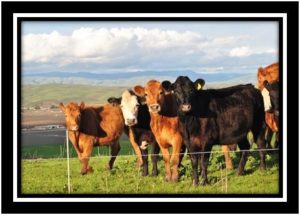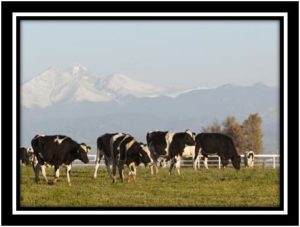Next week the AMTS crew will be headed off to Denver, home of bison, columbines, and the most micro breweries in the United States, for a training session. After holding meetings for several years in eastern United States, we decided to give our western customers a travel break (and ourselves a change of scenery). This session will focus on what Tom and Lynn like to call “Drilling Down into the model”. Additionally, guest speakers, Jim Drackley and Ryan Higgs will talk of their current research regarding the CNCPS model.

We will begin our conference Tuesday, August 13, with an overview of where AMTS, as a company, is headed and where we see the model taking farmers and nutritionist as they strive to provide the best possible diets that balance and maximize health, profitability, and minimize environmental effects. Tom and Lynn will offer some of their tips for herd evaluation and information gathering. The afternoon session will really dig down into the model biology examining assessing milk fever risk, dealing with fermentable carbohydrates, the importance of incorporating information about minerals in the water into the diet formulation, and evaluating feeding time as it relates to intake. Tom will expand on recommended ration targets and how to balance using peNDF – topics that set up the ration for the best optimization results.
Caroline will introduce and explain AMTS.FBM, our feed bank manager program, a critical tool for linking diets and ingredients in the Farm-Nutritionist-Mill dynamic. We introduced this program into our software suit this past winter as a time saving solution for clients coordinating ingredient specifications with Mills; it is especially helpful for those nutritionists who work under an umbrella company.
After a fun evening at a Colorado Rockies Baseball game we will resume our work session Wednesday morning with a presentation from Ryan Higgs, Cornell; his research into Nitrogen pool utilization will bring changes to the CNCPS feed libraries. He will discuss how that data will be incorporated into the model going forward to the next version. Continuing with the focus on ingredient inputs, Tom will expand on feed library values, creating specialty feed banks, and what inputs are most critical to accurately model animal response.

Jim Drackley is our featured after lunch speaker. Jim’s research has focused on varied topics from calf nutrition, intake, gene regulation of partitioning factors, and liver metabolism; he will bring us up to date on his current research at the University of Illinois. Tom will speak on optimizing rations. He will provide guidelines to assist in setting up parameters to get the most benefit from running both the linear and the advanced optimizers. This session will be an opportunity for users to gain insights on the best approach for fully realizing AMTS.Pro’s power as a tool for attaining producers’ profitability goals.

Thursday morning we will head out to visit a Colorado Dairy followed by a wrap up question and answer period before participants return home.

Our Denver workshop promises to be great opportunity for our users to further their understanding of how the model and the programs AMTS offers can help give clients a competitive edge in the market place. This session will give participants a chance to share knowledge with each other and to interact with some of the industry specialists in the forefront of ruminant nutrition modeling. We look forward to working with those who can join us. For those of you unable to attend, we will follow up this blog with a detailed summary of the presented information. See you in Denver—if not physically, in spirit!
